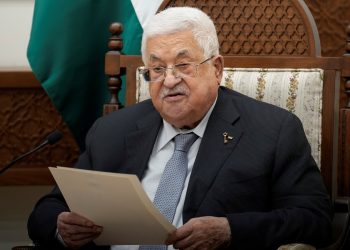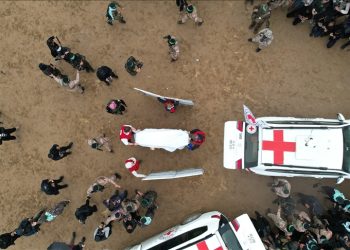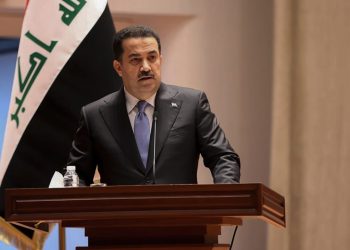In a high-stakes diplomatic mission, U.S. Secretary of State Antony Blinken flew into Israel on Tuesday, advocating for a ceasefire in Gaza following the killing of Hamas leader Yahya Sinwar. However, his calls for peace seemed to fall on deaf ears among Israeli officials and settlers who gathered just a day earlier to discuss the future of the Gaza enclave.
The conference, organized by the settler organization Nahala, took place a mere three kilometers from the Gaza frontier. It was strategically timed to coincide with the annual Sukkot religious holiday, which commemorates the exodus of the Jews from Egypt. The event was held in a closed military zone under the protection of the Israeli army, highlighting the tense and volatile environment surrounding the discussions.
The atmosphere at the conference was charged, with the regular thud of outgoing artillery fire punctuating the speeches. Each explosion was met with applause and cries of “God bless our brave soldiers,” underscoring the prevailing sentiment among the attendees. Many of the men present were visibly armed, carrying machine guns or pistols, a stark reminder of the ever-present threat of violence in the region.
An announcement over the PA system cautioned attendees against using their weapons in the event of a terrorist infiltration, urging them to let security personnel handle any potential threats. This plea for restraint was a testament to the heightened security concerns and the volatile nature of the gathering.
The conference attracted a diverse group of supporters, including individuals from the United States, South Africa, and Australia. Among them was a great grandmother from Melbourne, proudly wearing a sticker that declared in Hebrew, “Gaza is part of Israel,” alongside another proclaiming, “Kahane was right.” The latter reference to Meir Kahane, the late American-born rabbi and convicted terrorist who advocated for the expulsion of Palestinians from Israel, highlighted the extreme views held by some attendees.
The discussions at the conference were singularly focused, with no room for negotiation or compromise. The prevailing sentiment was one of determination to assert control over the Gaza enclave, with little regard for the diplomatic efforts being made by Blinken and the international community.
As Blinken arrived in Israel, the contrast between his mission and the conference could not have been starker. While the U.S. Secretary of State was pressing for a ceasefire and a de-escalation of violence, the settlers and officials gathered near Gaza were planning for a future that did not include peace talks or concessions.
The situation in Gaza remains dire, with ongoing military operations resulting in significant loss of life and widespread destruction. The humanitarian crisis continues to worsen, with civilians bearing the brunt of the conflict. Blinken’s visit was intended to address these urgent issues and push for a resolution that prioritizes the protection of civilian lives.
However, the conference near Gaza highlighted the deep-seated divisions and the challenges facing any efforts to broker peace. The presence of international supporters and the celebration of extremist figures like Kahane underscored the complex and polarized nature of the conflict.
The international community has expressed concern over the escalating violence and the potential for further destabilization in the region. Calls for restraint and dialogue have been echoed by various countries and organizations, emphasizing the urgent need for a resolution that addresses the root causes of the conflict.
For the residents of Gaza and the surrounding areas, the ongoing violence has created a climate of fear and uncertainty. Many families are questioning where they can find safety and whether any place is truly secure from the threat of airstrikes and military operations.
As Blinken continues his diplomatic efforts, the focus remains on the immediate need to de-escalate tensions and prevent further violence. The international community must remain vigilant and committed to supporting efforts that prioritize the well-being of civilians and pave the way for a brighter future for all those affected by the conflict.
Blinken’s visit to Israel and his calls for a ceasefire have been overshadowed by the settler conference near Gaza, highlighting the deep divisions and challenges facing any peace efforts. As the situation continues to unfold, the hope for peace and justice remains a guiding light for those affected by the ongoing hostilities. The international community must continue to advocate for a resolution that addresses the root causes of the conflict and prioritizes the protection of civilian lives.







